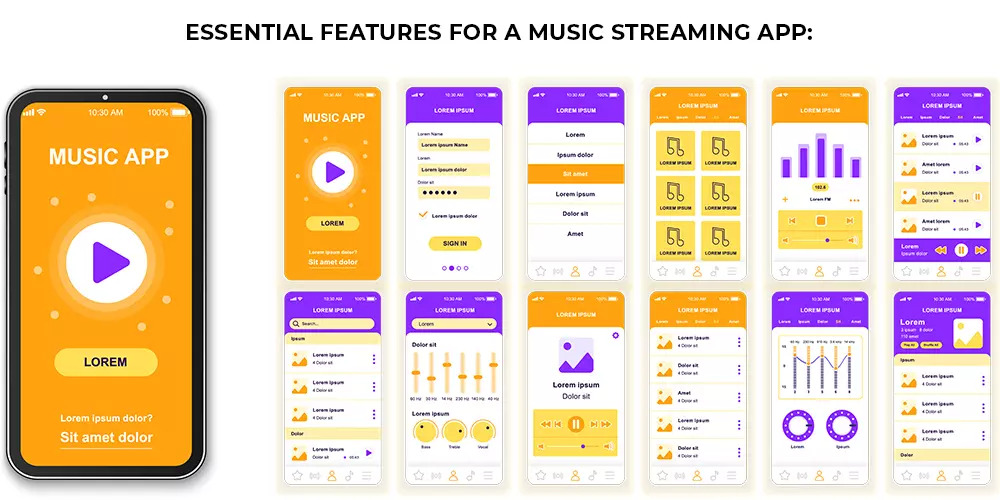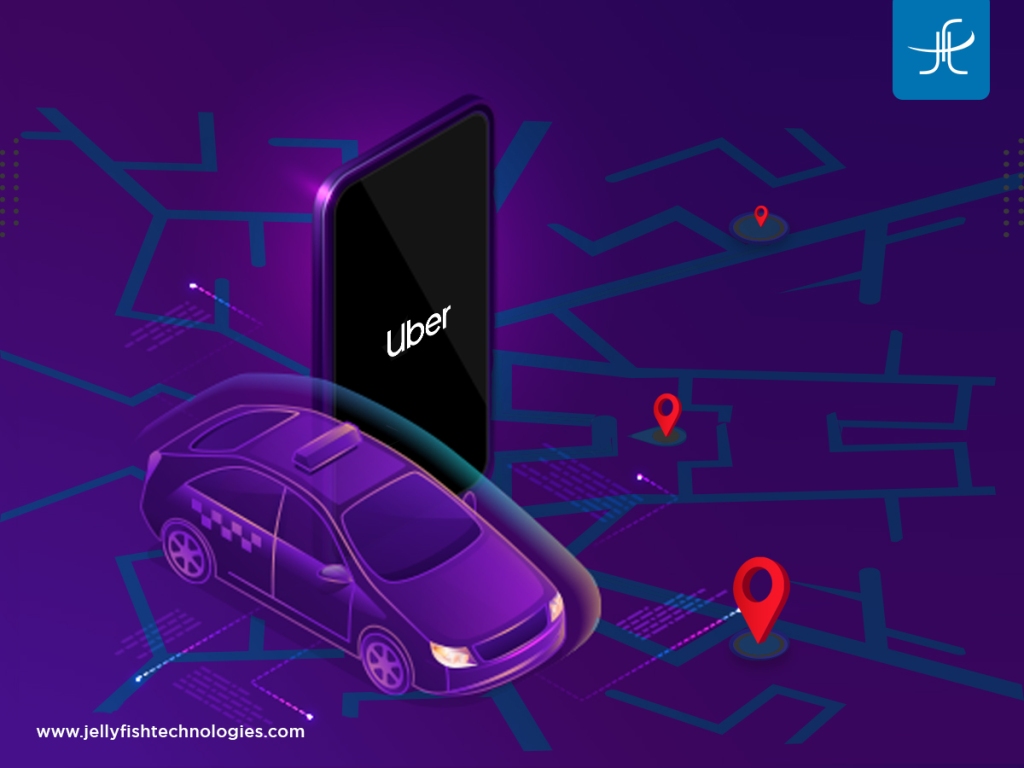Remember the time when you used to visit the Internet cafe to get new songs on your iPod or Walkman?
Seems like a long time ago, doesn’t it?
Well, with the introduction of music streaming mobile apps, the way we listen to music has changed completely. We are just a click away from downloading our preferred music streaming app and listen to our favorite track, anywhere and at any time.
According to technavio, the global music streaming service market is expected to grow by $10.01 billion from 2019 to 2023. This growing popularity is the result of the convenient services provided by these apps and the value of the money they offer to their users.
If you are thinking of developing a music streaming mobile app, then follow the below-mentioned steps and you are good to go.
Let’s begin.
Popular music streaming mobile apps

Before developing a music streaming app, you need to learn about your possible competitors. Some of the popular music streaming mobile apps available in the market are:
Spotify
Spotify is amongst the most downloaded music streaming apps. According to Statista, in 2019, 35 percent of music streaming subscribers worldwide had subscribed to Spotify. It is delivering service to about 100 million subscribers.
Spotify is available in both free and paid versions. Free accounts offer a wide range of music collections but have some listening limitations and ads while the paid account offers premium services like ad-free music and offline streaming.
YouTube Music
YouTube music is available by subscription. According to Statista, the YouTube Music app was downloaded over 5.2 million times from the Google Play Store and nearly 1.5 million times from the Apple App Store in 2021, making it the world’s leading music app.
YouTube Music provides both video and audio mode to its user and can search songs using snippets of lyrics. It is popular for its enhanced audio quality and listening experience. This music app is available for both Android and iOS users.
Apple Music
Apple Music made approximately $4.1 billion in revenue in 2020, accounting for 7.6 percent of Apple’s total services revenue, according to Business of Apps.
This app offers a great collection of songs for users from all over the world. You can also listen to the local radio station using this app.
Apple Music is available for both Android and iOS users.
Points to consider before developing a music streaming mobile app

Types of music streaming services
Before starting the development process, you should decide what type of music streaming service you want to build.
Some of the popular music streaming services are:
Music Media Libraries
Media music libraries allow the user to have unlimited access to songs on a monthly subscription payment basis. Using this service, a user can avoid expenses on purchasing individual songs or albums.
Examples: Spotify, YouTube Music, Apple Music
Cloud Storage
This platform allows users to store and manage media in cloud storage and stream them anywhere and any time they like.
Examples: CloudPlayer, AudioBox, Beat
Radio Streaming Service
Radio streaming services provide an automated search for music to be delivered to users in the form of genre playlists, artist-centric lists, curated lists.
Examples: Apple Music, iHeartRadio
Platform
Now that you have decided what type of music streaming service you want to build, it’s time to decide on the platform.
There are two types of platforms: Android and iOS. If you are tight on your budget then choose your platform according to your targeted audiences and their preferences. For example, if you plan to develop an app for US customers, choose iOS, similarly choosing Android for UK customers.
If you want to stay competitive and have the budget then develop an app for both platforms. This will help you gain more users.
Licensing
For using the music content in your music streaming app, you need to get a Public Performance License.
If the app is for US users, then you need to apply for the license in any one of these agencies:
- The American Society of Composers, Authors and Publishers (ASCAP)
- Broadcast Music Incorporated (BMI)
For UK users, apply to The Society of European Stage Authors and Composers (SESAC).
Skipping this step can lead to huge fines from a minimum of $750 up to $150,000 per one song played.
Build your app: Essential features for a music streaming app

A music streaming app should have the following features:
Registration
Users can register and log in to the app via email, mobile number, or social media account. Also, include the “Forgot Password” feature to make your app more user-friendly.
Profile
This feature will allow the users to manage their personal information, make playlists, and update their payment details.
Search
Search is a mandatory feature as it will allow users to search for songs. Users can search for the music by artist, title, album, recording studio, or genre.
My music
For the users to save their favorite music, albums, mark artists, and create playlists.
Share music
This feature will allow users to share their favorite tracks with other users.
Push notifications
This feature will notify users about a new song release, new trend, a new artist, or app updates.
Settings
Settings will allow users to change audio and app settings such as selecting streaming quality, music language, click behavior, among others.
Along with these must-have features, you can also incorporate these advanced features:
- Recommendations
- Offline access
- Uploading media
- Social media sharing
Team and tech stack required for building a music streaming app
It’s time to gather the team. Here is a list of team members required to develop a music streaming app:
- Business Analyst
- Project Manager
- UI/UX designer
- Android developers
- iOS developers
- Back-end developers
- QA engineer
Coming to the tech stack, these are the following technologies required for developing a music streaming app:
- Programming languages: Python, Javascript
- Frameworks: Hadoop, Apache Storm, Hub Framework
- Server: Nginx
- Cloud storage: Amazon S3, Google BigQuery
- CDN: Amazon CloudFront
- Database: PostgreSQL, Cassandra
Conclusion
According to Research and Markets, the music streaming market is expected to grow by $ 7.47 billion during 2021–2025 progressing at a CAGR of 19% during the forecast period.
The music streaming market is growing with every minute passing by and it surely is a great time to invest in building apps like Spotify and Pandora.
Now that you know almost everything about developing a music streaming app, it’s time to partner with the best app development company across the globe.
Jellyfish Technologies is a reliable mobile app development company. It provides both native and hybrid mobile app development services for Android and iOS.





